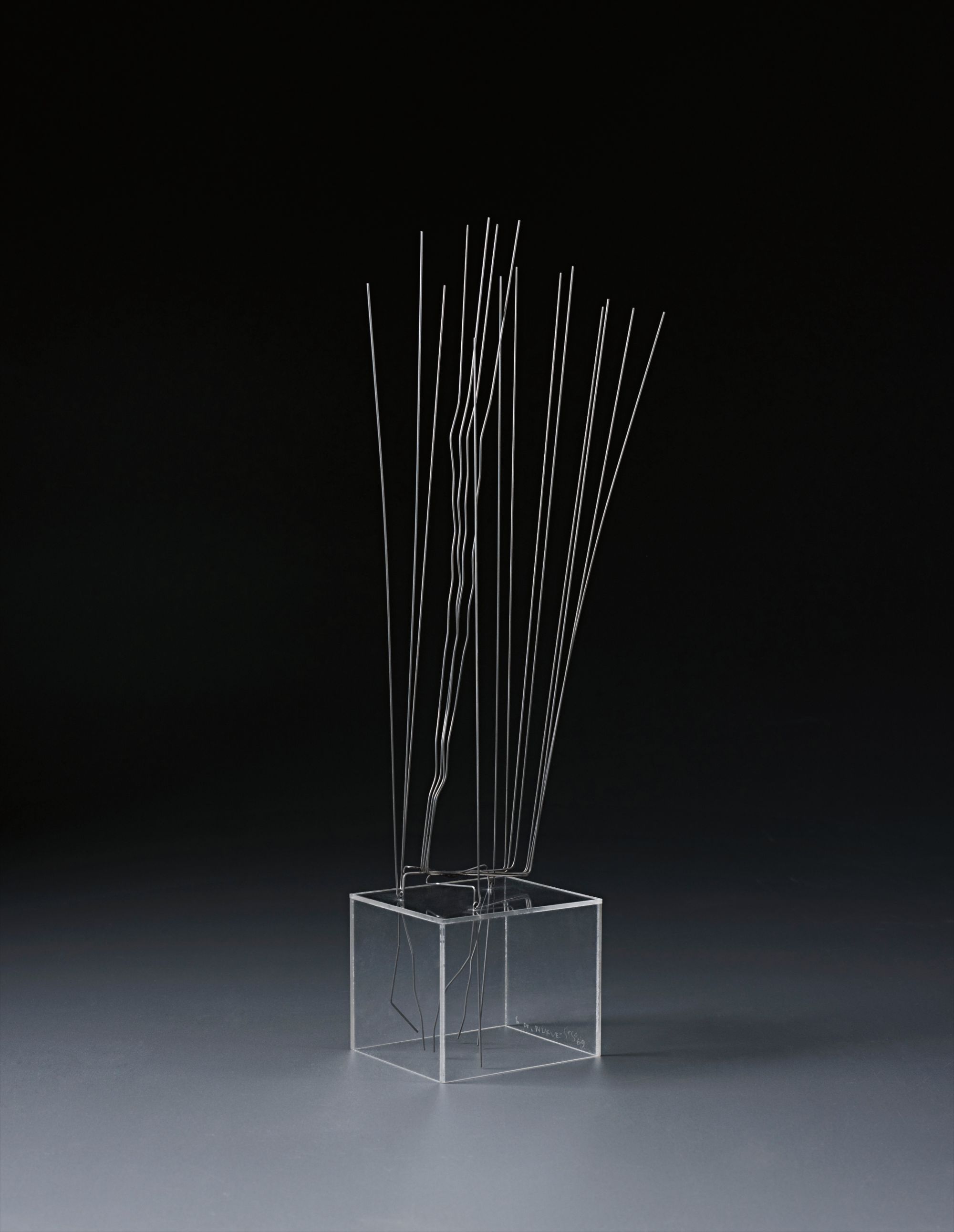

15Ο
Gego
Seis de la serie de Nueve
Full-Cataloguing
Seis de la serie de nueve was produced at the height of Gego’s career in 1969. The German-born architect and engineer Gertrudis Goldschmidt immigrated to Venezuela in 1939 at the age of 27 in response to the crippling of Germany by the oppressive Nazi Regime. In 1952 she was awarded Venezuelan nationality after having worked on various architectural projects, and she later obtained prestigious teaching positions at important educational institutions in Caracas. Gego was well aware of the Modernist movement, but she sought to create her own style among the ideas of Constructivism, Geometric Abstraction, and Kinetic Art. From the mid-1950s she concentrated on abstract drawing, and encouraged by Alejandro Otero and Jesús Rafael Soto, she began to create three-dimensional works, first using paper and subsequently iron. In 1967 she began to employ stainless steel wire, a light and flexible medium that gave her independence from welders and blacksmiths and enabled her to be a self-sufficient artist. The present lot consists of fine stainless-steel wires anchored to the base through small perforations and then knotted underneath. The wires stand up freely from the base, grass-like in character and semi-parallel. The base material (acrylic glass) is transparent and accentuates the subtle delicacy and lightness of the piece.
One of Gego’s best known works, Gran Reticularea, now at the Galeria de Arte Nacional in Caracas, was also produced in 1969 and is comprised of a wide network of web-like, radiating forms. She created the wire system by latching together short pieces of stainless-steel wire that fill the entire room. The repetitive wire patterns seem to be constantly changing, allowing the viewer to feel the infinite nature of the woven wire materiality and weightlessness that illuminate Gego’s creative design and engineering. According to Lina Carvajal, Gego's Reticulareas from the 1960s "marked the maturity of her work and served as the point of departure for her later work." Seis de la Serie de Nueve resembles Gran Reticularea, since both pieces are composed of the same metal wire and transparent base, creating geometric yet seemingly organic forms.
Through syntax of lines and geometric forms placed in a non-hierarchic order of intersecting planes, Gego develops her own highly elaborate visual vocabulary to explore the limits of space and time. She has the capacity to weave between creative languages and industrial mediums, always looking to break the mold of traditional sculptural form and push forward into infinite space.
Gego
Venezuelan | B. 1912 D. 1994Venezuelan artist Gego is internationally recognized as a leading female figure of abstraction in Latin America. Gego (Gertrude Goldschmidt) studied architecture and worked as a draughtsman in various firms in Germany before immigrating to Venezuela in 1939.
Gego's experimentation with pure abstraction in the late 1950s culminated in her most important series, produced in the 1980s, titled Dibujos sin Papel (Drawings Without Paper). In this series, she utilized industrial materials in suspended wire sculptures. These seemingly banal yet technically sophisticated sculptures are representative of the artist's mature style and were undoubtedly informed by her training as an architect. With the series Reticulárea ambiental, Gego built upon the Dibujo sin Papel and further highlighted her interest in spatial abstraction by creating expansive, engulfing sculptures of metal scraps.